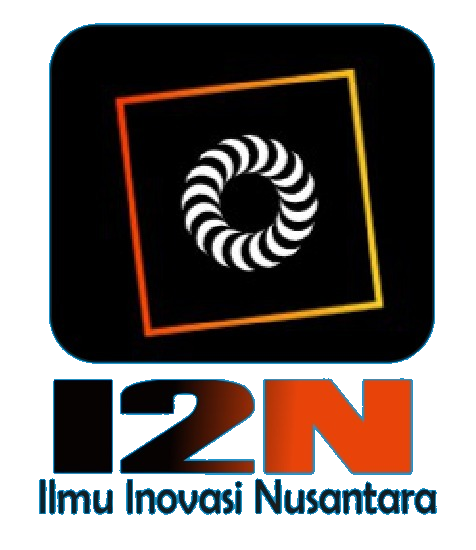Trends and Divergences in Computational Translation Studies: A Bibliometric Analysis Using CiteSpace
A Review
DOI:
https://doi.org/10.58557/(ijeh).v5i3.336Keywords:
CiteSpace, Computational translation studies, Literature reviewAbstract
This study aims to examine the most dominant aspects of computational translation studies in China and the broader international translation community with the help of CiteSpace. The primary issue addressed in this study is the divergence in research trends between Chinese academia and the global community in computational translation. This study employs CiteSpace to identify the most popular topics in computational translation studies in China and obtain an objective overview. Subsequently, it reviews 40 high-quality papers in the field to reveal the current state of research. The methodology adopted in this study involves bibliometric analysis using CiteSpace, which allows for identifying significant trends in computational translation studies. The findings indicate that contemporary research emphasizes neural networks, machine translation, and post-editing. Furthermore, there is a noticeable divergence in research interests between Chinese scholars and the international academic community. A key finding is that developing new neural models is currently a popular research focus. This study aspires to provide a clear overview of current research trends in computer-based translation studies and to identify potential areas for future exploration. By doing so, it aims to serve as a valuable guide for researchers seeking to understand the landscape of computational translation studies and to investigate emerging aspects of this ever-evolving field further
References
Chollampatt, S., Susanto, R. H., Tan, L., & Szymanska, E. (2020). Can automatic post-editing improve NMT?. arXiv preprint arXiv:2009.14395.
Dai, G., & Liu, S. (2023). Neural machine translation: Advancements and challenges. Foreign Language Teaching, (01), 82-89. Doi: 10.16362/j.cnki.cn61-1023/h.2023.01.005.
do Carmo, F., Shterionov, D., Moorkens, J., Wagner, J., Hossari, M., Paquin, E., ... & Way, A. (2021). A review of the state-of-the-art in automatic post-editing. Machine Translation, 35, 101-143.
Feng, Z., & Zhang, D. (2022). Machine Translation and Human Translation Boost Each Other. Journal of Foreign Languages, (06), 77-87.
Gao, F., Su, Y., Niu, X., Zhao, Y., Fan, T., & Ren, Q. (2020). Mongolian-Chinese Neural Machine Translation Based on Transformer. Computer Applications and Software, (02), 141-146+255.
Geng, F., & Hu, J. (2023). New Direction for Post-Editing by Artificial Intelligence Translation: A Case Study of ChatGPT Translation. Foreign Languages in China, (03), 41-47. Doi: 10.13564/j.cnki.issn.1672-9382.2023.03.009.
Hou, Q., & Hou, R. (2019). A Review of Studies and Developments on Machine Translation Methodology. Computer Engineering and Applications, (10), 30-35+66.
Hu, C., Ye, N., Zhang, G., & Cai, D. (2024). Neural Machine Translation Method for Low-resource Scenarios. Journal of Chinese Information Processing, (06), 58-66.
Jia, Y. (2024). Integrating Translation Project Management Platforms with Generative AI Technologies: An Investigation into the Translation Process Through Human-machine Interaction. Foreign Language Teaching and Research, (06), 937-949+961. Doi:10.19923/j.cnki.fltr.2024.06.012.
Jia, Y., & Sun, S. (2022). Measuring the Difficulty of Machine Translation Post-Editing:A Research Framework. Foreign Languages in China, (03), 16-24. Doi: 10.13564/j.cnki.issn.1672-9382.2022.03.001.
Jiang, Z., & Zhang, Z. (2024). Convergences and Divergences between Automatic Assessment and Human Evaluation: Insights from Comparing ChatGPT-Generated Translation and Neural Machine Translation, ResearchGate. doi:10.13140/RG.2.2.15933.47842
Lee, S. M. (2020). The impact of using machine translation on EFL students’ writing. Computer assisted language learning, 33(3), 157-175.
Li, F. (2021). A Contrastive Study of the Performance of Online Neural Machine Translation Systems. Shanghai Journal of Translators, (04), 46-52.
Li, H., Feng, C., & Huang, H. (2021). A Survey on Low-Resource Neural Machine Translation. Acta Automatica Sinica, 47(6), 1217−1231 Doi: 10.16383/j.aas.c200103
Li, T., Li, J., Liu, Z., & Zhang, C. (2020). Few sample knowledge distillation for efficient network compression. Proceedings of the lEEE Computer Society Conference on Computer Vision and Pattern Recognition. Volume,lssue.2020.Pp 14627-14635
Li, Y., & Hou, X. (2024). Research and Practical Application of Idiom Recognition Technology in Machine Translation. Chinese Character Culture, (11), 175-177. Doi: 10.14014/j.cnki.cn11-2597/g2.2024.11.006.
Liang, J., & Liu, Y. (2023). Human Intelligence Advantages in Translation Competence: A Corpus-Based Comparative Study of Human Translation and Machine Translation. Foreign Languages and Their Teaching, (03), 74-84+147-148. Doi:10.13458/j.cnki.flatt.004946.
Liu, L., & Yu, X. (2019). Recurrent Neural Network (RNN) and Its Application Research. Science and Technology Vision, (32), 54-55. Doi:10.19694/j.cnki.issn2095-2457.2019.32.022.
Lopez, A. (2008). Statistical machine translation. ACM Computing Surveys (CSUR), 40(3), 1-49.
Munday, J., Pinto, S. R., & Blakesley, J. (2022). Introducing translation studies: Theories and applications. Routledge.
Nitzke, J., & Hansen-Schirra, S. (2021). A short guide to post-editing (Volume 16). Language Science Press.
Nitzke, J., Hansen-Schirra, S., & Canfora, C. (2019). Risk management and post-editing competence. The Journal of Specialised Translation, 31(1), 239-259.
Niu, Z., Zhong, G., & Yu, H. (2021). A review on the attention mechanism of deep learning. Neurocomputing, 452, 48-62.
Okpor, M. D. (2014). Machine translation approaches: issues and challenges. International Journal of Computer Science Issues (IJCSI), 11(5), 159.
Qin, H. (2024). Practical Exploration of the Applicability and Limitations of Machine Translation in Literary Translation. Overseas English, (07), 25-27.
Ren, B. (2020). The use of machine translation algorithm based on residual and LSTM neural network in translation teaching. Plos one, 15(11), e0240663.
Shi, L., Wang, Y., Cheng, Y., & Wei, R. (2020). Review of Attention Mechanism in Natural Language Processing. Data Analysis and Knowledge Discovery, (05), 1-14.
Sun, S. (2019). Measuring difficulty in translation and post-editing: A review. Researching cognitive processes of translation, 139-168.
Urlaub, P., & Dessein, E. (2022). Machine translation and foreign language education. Frontiers in Artificial Intelligence, 5, 936111.
Wang, J., & Wang, L. (2024). Research Progress on Cognitive Effort in Machine Translation Post-Editing. Journal of Xi'an International Studies University, (02), 81-86. Doi:10.16362/j.cnki.cn61-1457/h.2024.02.022.
Wang, L., & Wang, X. (2023). The Study on the Training Model of Machine Translation Post-Editing Competence in the Era of ChatGPT. Technology Enhanced Foreign Language Education, (04), 16-23+115.
Wang, Q., & Yan, L. (2020). English Translation Method Based on Recursive Neural Network. Techniques of Automation and Applications, (11), 37-40+70.
Wang, Y., Liao, B., Peng, C., Li, J., & Yin, Y. (2021). Research Review of Recurrent Neural Networks. Journal of Jishou University(Natural Sciences Edition), 42(1), 41-48. Doi:10.13438/j.cnki.jdzk.2021.01.007.
Wang, Z. (2024). Problems Related to Machine Translation in the Digital Age and their Enlightenment. Journal of Yunnan Normal University (Humanities and Social Sciences Edition), (05), 44-54.
Wu, M., Wang, D., & Huang, S. (2024). Research on the Translation and Knowledge Organization of Ancient Agricultural Books. Agricultural History of China, (02), 52-64.
Wu, Z. (2024). An Empirical Study on the Impact of Machine Translation Tools on English Learners' Writing Proficiency. Foreign Languages Bimonthly, (05), 103-111+160.
Yao, Y., & Zhao, X. (2017). Review of Computer-aided Translation in China. Journal of Capital Normal University (Natural Science Edition), (06), 20-25. Doi:10.19789/j.1004-9398.2017.06.005.
Zhao, Y., Zhou, L., Wang, Q., Ma, C., Liu, Y., Wang, Y., & Zong, C. (2019). Research on Neural Machine Translation Technology for Low-Resource Minority and Chinese Languages. Journal of Jiangxi Normal University (Natural Science Edition), (06), 630-637. Doi:10.16357/j.cnki.issn1000-5862.2019.06.12.
Zhong, W., & Shu, C. (2020). Competence Structure and Course Design of Post-Editing——A Frontier Analysis Based on Foreign Post-Editing Courses. Technology Enhanced Foreign Language Education, (06), 86-91+7.
Zhou, X., Duan, X., Yu, H., & Zhang, M. (2021). Progressive Semi-Knowledge Distillation for Neural Machine Translation. Journal of Chinese Information Processing, (02), 52-60.
Downloads
Published
How to Cite
Issue
Section
License
Copyright (c) 2025 Yuxuan Gu

This work is licensed under a Creative Commons Attribution-ShareAlike 4.0 International License.














